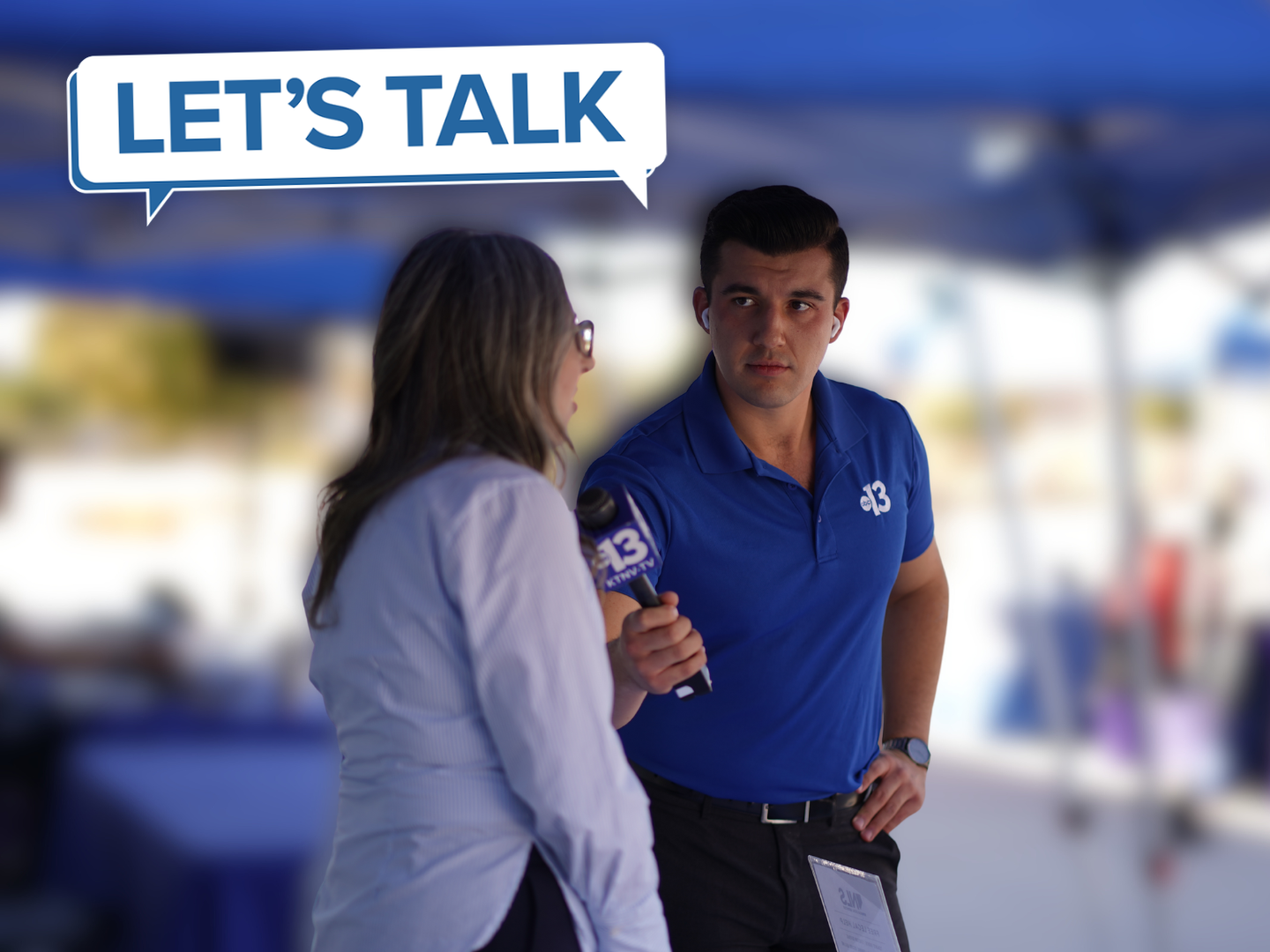LAS VEGAS (KTNV) — Extreme heat rightfully gets a lot of our attention when it comes to Mojave Desert summers, but the start of summertime also coincides with the start of monsoon season in Southern Nevada and the desert southwest.
I spoke to local officials to learn more about what you can do to stay safe as the weather becomes unpredictable.
Monsoon storms are about as unpredictable as the season itself–see last year's "non-soon" season, which held Las Vegas' second-longest dry spell in history.
When conditions are right, strong, fast-moving thunderstorms can pop up within minutes, dumping a lot of rain in one concentrated area in a short amount of time.
In fact, we saw that several times over the first week of June in the Las Vegas Valley.
Monsoons can be over just as fast as they develop, but their impacts can last a lot longer.
Jacob Sanders is the Clark County Regional Flood Control District's Public Information Coordinator, who helps educate the public about flash floods.
They can happen unexpectedly and can be deadly, considering it takes only six inches of flood water to knock down a person.
"Monsoon season here in the desert is prime time for flash floods," Sanders said. "Flood water is bigger than us and stronger than us–people end up becoming injured, or worse, in flood water. They think they're going to be okay–no one ever thinks it's going to happen to them, until it does."
If you've never seen a flash flood before, there's no better place than the flash flood exhibit in the Springs Preserve's Origen Museum to experience the power of a flash flood for yourself.
It's an interactive exhibit with piped-in thunder and rushing recycled water that shows visitors first-hand how quickly a normal desert afternoon can get turned upside down by flash flooding, all from the safety of a platform.
So, what should you do if a monsoon storm rolls in and it starts to flood? Find higher ground and wait it out.
"A saying that many people might've heard if they've been in Southern Nevada for a while is 'turn around, don't drown,'" Sanders said. "It's short and sweet and memorable, but it's true. It's that easy–turn around your car. It might mean you're late for something, but that's much better than risking your life trying to cross a flooded road because you're in a hurry. Turn around, don't drown, water always wins."
But what if you're outside enjoying nature far from your car when a monsoon hits? That poses a whole different set of challenges than if you're out, say, running errands, according to Alan Gegax, one of the leaders of the online MeetUp group VegasHikers.
"You have to keep your eyes on the skies," Gegax said. "That hard, heavy rain, that's what's going to make it a hard time out there. You can be hiking and it's 85 degrees on Mount Charleston and it feels hot, then that monsoon comes and the temperature drops by 20 degrees, but now you're soaking wet and it's windy."
Checking the forecast before you go and keeping an eye on the radar on your hike is a great idea, but more often than not, cell service is limited.
"You have to use that old-fashioned farmer know-how and look at the sky," Gegax said. "You find something stationary, look at the edge of the cloud, and that will let you know which direction the storm is moving. If it's heading your way, then you better start getting your gear out."
Gear like a good rain jacket, gloves and a hat, which can all easily fit in your pack.
Then it's time to either decide whether it's time to head back to your car or try to find shelter.
"You're going to be looking for higher ground, because if that heavy downpour does come, then you know where you're going to be to A get out of the rain, and B get out of the potential flood," Gegax said. "Generally, you just want to go up."
No matter where you are in the valley, always stay out of flood channels and washes, regardless of whether they're natural or man-made.
"It's a simple decision, but it could be a life-saving decision." Sanders with the Flood Control District said.
Remember, the dangers of flash floods don't go away when monsoon season ends, either.
"We could have flash flooding on any day of the year," Sanders said. "It's important for Southern Nevadans to understand the importance of always being prepared to stay safe if they encounter flood water."

Local News



